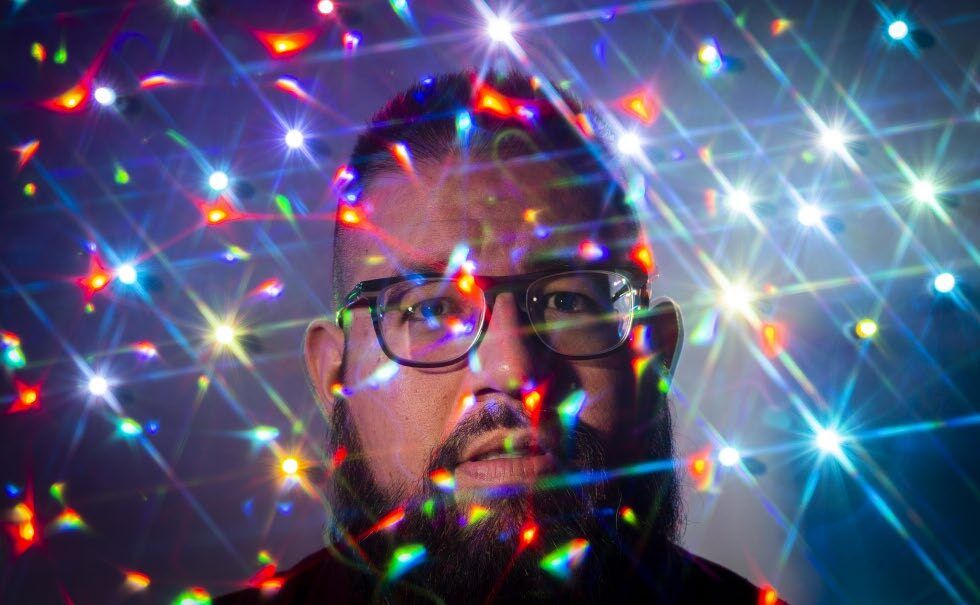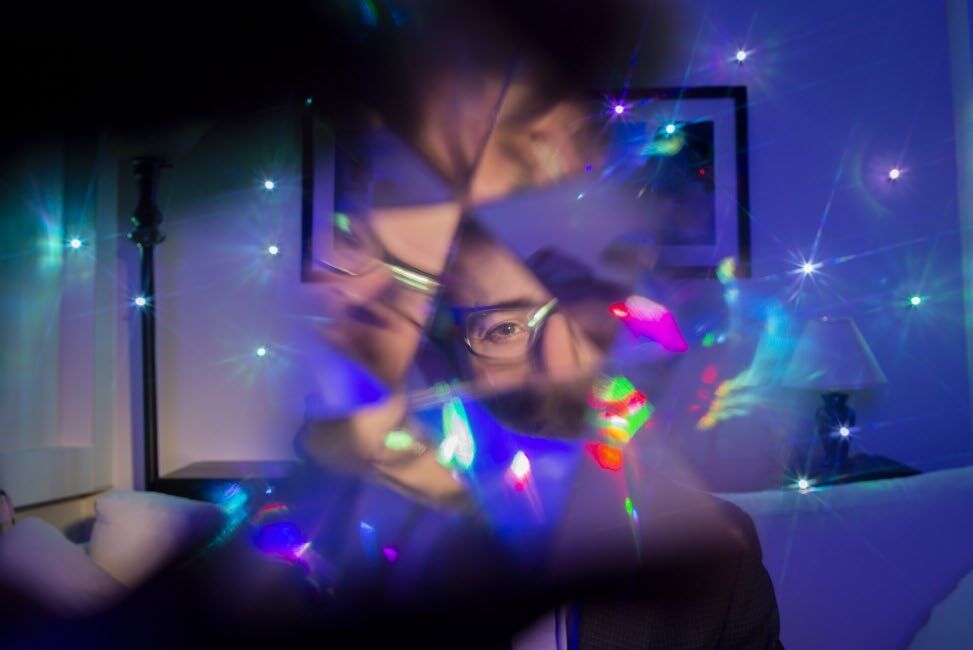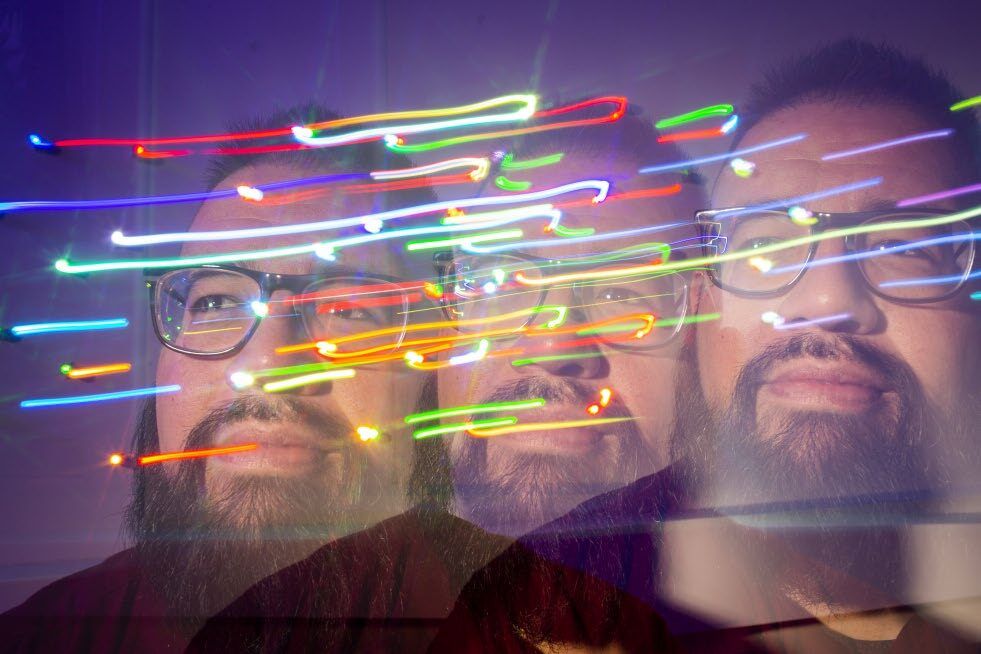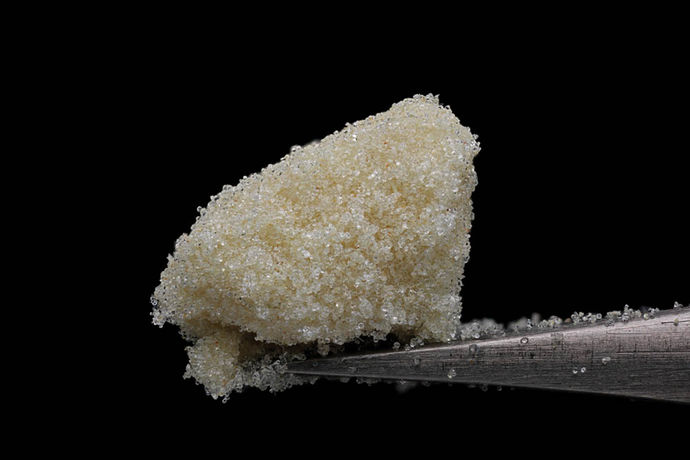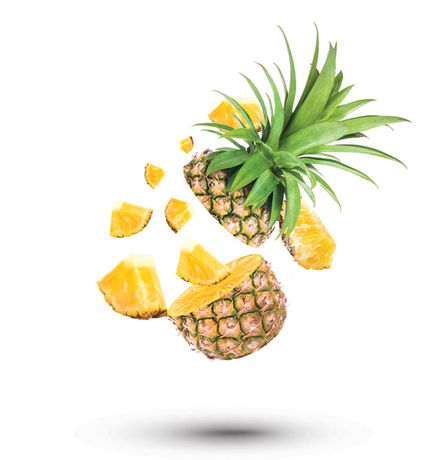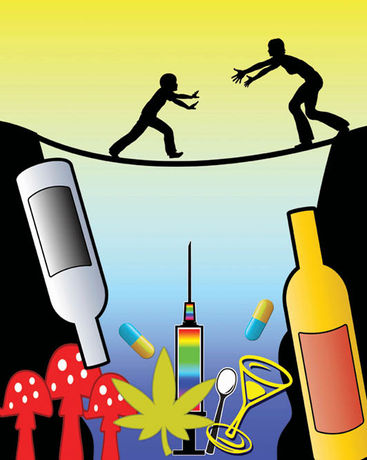The mind is a universe unto itself.
At once nebulous and ordered. Chaotic and principled. Bordered and seemingly infinite.
Those who attempt to traverse and map the universe of the mind via psychedelics go by an informal name:
Psychonauts.
If those who experiment with psychedelics are astronauts of the psyche, then the Johns Hopkins Center for Psychedelic and Consciousness Research is the NASA of innerspace.
In the year 2000, this small but dedicated group of scientists – led by Dr. Roland Griffiths at Johns Hopkins University in Baltimore, Maryland – became the first group to gain regulatory approval from the federal government to conduct psychedelic experiments on volunteers.
Since then, they have administered hundreds of doses of psilocybin – yes, the ‘magic’ in magic mushrooms – to willing subjects in order to measure the therapeutic efficacy of hallucinogens in treating several disorders and issues faced by patients.
We connected with Dr. Albert Garcia-Romeu and Dr. Matthew Johnson with Johns Hopkins’ Behavioral Pharmacology Research Unit in February to learn what life is like on the leading edge of psychedelic psychotherapy.
The high hurdle of history
To understand exactly what the team at Johns Hopkins hopes to accomplish, it’s important to first understand the roots of the psychedelic therapy movement.
The journey began decades ago, many say with the introduction of Lysergic acid Diethylamide (LSD), first synthesized and experienced by Dr. Albert Hoffman in 1938.
“One of the ways that he did that was accidentally ingesting a very tiny amount, and noticing these effects,” Garcia-Romeu said. “Most drugs we take in milligrams, and LSD we take in (significantly smaller) micrograms. That all of a sudden becomes a very interesting compound.”
In those early days, the term to describe LSD and similar compounds was “psychotomimetic,” which refers to the potential to mimic symptoms commonly associated with psychosis – such as laughing at things that aren’t there. This broadly accepted term was eventually challenged by Humphrey Osmond, whose studies led him to believe that while LSD and similar compounds possess the potential to inspire actions that resemble psychotic behavior, these effects are secondary at best.
“Psychoanalysis resembles Galileo’s telescope, which lets one see a somewhat magnified image of an object the wrong way round and upside down,” Osmond wrote in his 1957 research paper, A Review of the Clinical Effects of Psychotomimetic Agents. “The telescope changed our whole idea of the solar system and revolutionized navigation.”
Psilocybin, LSD and other similarly classified agents, Osmond said, “are more like the radar telescopes now being built to scan the deeps of outer, invisible space. They are not convenient. One cannot go bird watching with them. They explore a tiny portion of an enormous void. They raise more questions than answers, and to understand those answers we must invent new languages. What we learn is not reassuring or even always comprehensible. Like astronomers, however, we must change our thinking to use the potentialities of our new instruments.”
These early findings led Osmond to coin the term ‘psychedelic,’ which began to replace psychotomimetic as the accepted term for these hallucinogenic compounds.
“That shifted the whole classification of the drug class,” Garcia-Romeu said of this redefinition. “This was all happening because of these strait-laced, nerdy scientists.”
Following Osmond, the science around psychedelic therapy took a radical turn, with the teachings and experiments of Dr. Richard Alpert (Ram Dass) and Dr. Timothy Leary, who became icons for the psychedelic movement in the 1960s.
“In the broader culture, you have all of this counterculture stuff going on,” Garcie-Romeu said. “You start to see a different shift as some of these psychedelics started to come out of the lab and find more recreational usage.”
The effect of what many considered to be a mental and spiritual awakening started to change the entire face of the American culture.
“I think it kind of came to a crescendo, where you have all of this turbulence going on, where you have this 1950s, suburban housewife, straight-laced culture, and then you have this other movement starting to emerge,” Garcia-Romeu said.
The movement was forced underground in 1970, with Nixon and the Controlled Substances Act – which created the scheduling system which drugs continue to be classified under today.
“Nixon and that group were trying to disrupt that movement,” Garcia-Romeu said, “so they said, ‘The blacks and the hippies are taking psychedelics, so all we have to do is make those illegal.’ That was kind of the beginning of the end of the research that was going on. It wasn’t necessarily because there were huge risks that were going on with these drugs. It was because of the social climate at the time.”
Sanctioned research into psychedelic psychotherapy came to a grinding halt in the United States. No one would touch it. That is, until Griffiths and his visionaries at Johns Hopkins reopened the doors of perception in 2000.
“I think that our generation is much more excited and open to the possibility of psychedelics as medical treatments, or even as spiritual sacraments,” Garcia-Romeu said. “If you go back in history, the original uses of psychedelics were in indigenous cultures.”
At the time of this writing, the Johns Hopkins team has published more than 60 peer-reviewed articles on its findings and has helped volunteer subjects tackle an array of psychological issues.
Beyond the veil
Relegated to the underground without legal, peer-reviewed scientific research to temper public opinion, psychedelics fell prey to Nixon and Reagan era propaganda campaigns which set the tone for how the mainstream viewed the compounds – setting them up as dangerous, unhinged, kaleidoscopic party drugs in the minds of the inexperienced.
Recreational use will always be around, but the researchers at Johns Hopkins won’t be taking volunteers to a sunrise EDM show anytime soon. They aim for a well-controlled, clinical approach designed to elicit empirically measurable, therapeutically beneficial results.
“Guiding people through these types of sessions is a unique and intimate experience,” Garcia-Romeu said, speaking to his participation in guiding more than 90 sessions to date. “Much of the crucial groundwork takes place in the weeks before the session. During that time, it’s important to form a solid working relationship that allows people to feel safe and comfortable diving into the experience and fully letting go. This includes a period of life review, so that we are aware of the major formative events, key relationships, life values and overall worldview of the person we’re working with – which hopefully helps them to feel seen and understood in a way that facilitates deeper explorations of these themes that may occur in the altered state that psilocybin can induce.”
After laying this groundwork, the team sets the scene for the subject, though it’s less about creating an external setting, and more about creating a comfortable environment for an internal scene to unfold in the mind.
“During the sessions we don’t do much ‘guiding’ really, we take a largely non-directive approach that involves the person lying on a couch with eyes covered under a blanket and listening to a program of music,” Garcia-Romeu said. “We check in to make sure the person is doing OK and that their vitals are within normal range, but if that’s all fine, we typically just sit back and let the experience unfold, which can be a pretty intense inner journey that the person then fills us in on when the drug effects begin wearing off.”
Sessions can range from psychologically challenging experiences such as fear, anxiety, and the unearthing of uncomfortable thoughts and memories – to the profound feelings of love, gratitude, and interconnectedness with all existence, Garcia-Romeu says.
“Not only are all these possibilities, but someone can have an experience that encompasses many or all of these flavors in a single session, and it’s hard to tell beforehand how this will unfold,” he said. “For that reason, we really emphasize going into the session with a sense of openness and acceptance for whatever comes up.”
Sometimes, experiences can grow too intense for subjects, and they begin to manifest what’s commonly referred to as a ‘bad trip.’ Here, Johns Hopkins developed ways to bring subjects back to safe mental spaces within the clinical setting.
“In the minority of cases where we do see strong fear or anxiety,” Garcia-Romeu said, “we would take a more hands on approach to reassure the person they are safe, that what they are experiencing is only temporary and will be over soon, and help them to feel more grounded and centered – for instance by adjusting the music volume, removing the eyeshades, bringing some water, doing breathing exercises, or providing physical reassurance like a hand on the shoulder or a hand to hold.”
Volunteers usually experience some sort of revelation or positive change because of this process, though it usually comes after the trip itself.
In the weeks after the session day, the staff reviews the experience with subjects, in order to unearth lessons and longer term positive changes.
“I find it can be helpful to think of this as a process similar to renovating a house,” Garcia-Romeu said. “There’s a lot of careful planning leading up to this, where people take stock of their lives, identify what’s of value to them, and make sure it’s packed up safely ahead of any major demolition. The drug session days can be like that demolition day, where in a relatively short duration, dramatic changes occur, walls come down, hidden passages are revealed, and new doorways can appear. Then afterward comes the laborious process of picking up the pieces and putting things in their right place.”
According to Garcia-Romeu, volunteer psychonauts find themselves letting go of grudges, forgiving themselves for past transgressions, and unchaining themselves from damaging belief patterns. The experiment administrators often have their own moments, as well.
“In witnessing and facilitating this process I often have my own ‘a-ha’ moments, like, ‘I should really make an effort to spend more time with and be nicer to my parents or siblings,’ or, ‘I’ve been harboring anger about X for a long time and should really do something to express this appropriately and work through it, rather than letting it fester,’” Garcia-Romeu said. “Some of the other more cosmic revelations seem oddly trite in comparison. A big feeling that people often come away with is this ‘All is One’ theme, which I wholeheartedly embrace as part of my own spiritual life as a mystic. But I think the messy human questions around how to live that out is usually where the rubber meets the road and a lot of the work takes place.”
Johnson, an associate professor with the team whom Garcia-Romeu describes as his mentor, feels the same way.
“It’s more common for folks to have benefits related to topics they have already been struggling with – that they have known to be issues lurking in the basement, but just seem to never fully address them in the day-to-day grind of life,” Johnson said. “I think the ‘nature of reality’ stuff comes along for the ride, but my strong impression is that folks more or less come out of sessions with the same overall worldview they came in with – with maybe some minor modifications around the edges in some cases. I’m talking about belief in God or religion, belief in an afterlife, etc. But this doesn’t seem to be what’s driving the bus. It’s the day-to-day lessons about their life that make the difference.”
It’s revelations of this psychological and interpersonal nature that the Johns Hopkins team focuses on with its research into the effect of psilocybin on depression, self-destructive habits and other real-world human challenges.
“If the data continues to look promising, I anticipate psychedelics to be a game changer in psychiatry with efficacy across a number of disorders,” Johnson said. “Compared to traditional psychiatric medications, these treatments prompt psychotherapeutic process, which can in some cases constitute cures rather than just symptom reduction. And I anticipate that beyond therapeutics, they will be incredibly powerful tools for understanding the interface between brain and psychology.”
A trip by any other name
At this point, the team at Johns Hopkins only works with psilocybin for its psychotherapy trials. There are a few reasons for this, some of which are societal, and some logistical.
“It’s not spelled LSD, that’s one of the main reasons,” Garcia-Romeu said when asked why their team focuses on psilocybin. “With LSD, there’s all this additional baggage of the counterculture of the 1960s. But you still get similar effects to LSD, and what’s better, you get them in an 8-hour window, not a 12-hour window.”
That time factor plays a major role in choosing mushrooms as the starting point. Considering that the subjects must be monitored leading up to and through the trip, all the way through the comedown phase, it simply makes no logistical sense to experiment with LSD. A psilocybin trip means an 8-hour workday, whereas it would take up to16 hours for a researcher to properly guide an LSD experience.
Contrary to popular misconception, both compounds are perfectly safe, and have no physical danger of overdose, Garcia-Romeu reports, though they can have intense psychological effects.
“You can take too much, and that will have temporarily mind-altering effects, but those will go away over time,” he said. “You’d have to eat something like 20 times your body weight in mushrooms in order to reach a toxicity level that might be harmful, physically.”
They’ve done basic research into other hallucinogenic substances, such as salvia, dextromethorphan and DMT, but haven’t ventured into psychotherapy with those compounds.
“We give it to people and see what it does to their heart rate, and see what it does to their brain state,” Garcia-Romeu said. “We’re not necessarily looking into efficacy.”
Considering their successes with psilocybin, Johnson says the team at Johns Hopkins plans to experiment with the psychotherapeutic efficacy of other psychedelics in the future. Next on the list are LSD, DMT and 5-MeO-DMT, the latter two of which Garcia-Romeu says offers considerable effect in a comparably brief timespan when administered properly.
The way Garcia-Romeu sees it, the work they are doing will hopefully lead to more effective, more humane treatments for mental disorders.
“They’ll shock your brain,” he said, referring to traditional methods of treatment. “They’ll put you in electroshock therapy. That’s how far they’ll go if their medicines won’t work. … So why not try giving someone MDMA to get over their post-traumatic stress? What if it works?”
Preparing for launch
There are multiple challenges facing the Johns Hopkins team and others who may choose to take up the psychonaut cause.
Garcia-Romeu feels like misinformation of all kinds still runs rampant, and not just when it comes to prohibition. He feels people should be skeptical of the current micro-dosing trend.
“I’m guessing either people claiming micro-dosing effects are getting a placebo effect, where they take it and they feel better because they expect to feel better. Or they’re actually taking a larger dose, thinking they’re taking a micro-dose,” he said.
There has been no conclusive placebo-controlled research into the efficacy of micro-dosing up to this point, he says, and he advises people to be wary of anyone claiming to know the facts on the matter.
“They’re either trying to sell you their micro-dosing book, or sell you on their micro-dosing services,” he said. “Take whatever you come across with a grain of salt unless it’s placebo controlled.”
Johnson sees another challenge of a more personal nature facing psychedelic psychotherapists:
Staying grounded.
“People have many philosophical ideas about what these experiences are, whether a glimpse into the nature of reality, something supernatural or religious, a materialist tinkering of the nervous system that can nonetheless be helpful in some cases,” Johnson said. “To stay grounded, we need to be agnostic about this and let patients make their own interpretations … There is a great gravity for folks to get sucked into playing guru, shaman, or priest with something like this intervention, which can be held with great meaning. I have no issue with the right of religions who use these compounds … but for mental health professionals, we need to stay grounded, be flexible, and not impose our personal, non-empirical beliefs on the process.”
Volunteer for the flight crew
With growing political force behind the legalization of psychedelics – particularly psilocybin mushrooms – further peer reviewed, placebo controlled research into the subject is of paramount importance.
If this interests you, Johns Hopkins is currently accepting volunteers through its website, www.hopkinspsychedelic.org. They can also be found at facebook.com/JHPsychedelics and on Twitter @JHPsychedelics.
“We are recruiting locally for studies on quitting smoking, depressed mood in Alzheimer’s disease, and anorexia,” Johnson said. “We’ll have more studies to come in the next year or two, including treatment of psychological aspects of post-treatment Lyme disease, opioid addiction, PTSD and alcoholism.”
If someone’s struggling with mental obstacles or destructive behavior, they want to help. In turn, volunteer psychonauts can help Johns Hopkins forge the path to help more people in the future. Who knows? On a long enough timeline, FDA approval of psychedelics may be on the table.
“I won’t hold my breath until it happens,” Garcia-Romeu said, “but things are looking really good right now. For the first time since the Controlled Substances Act, you have clinical trials that exist to test whether MDMA or psilocybin have medical value. These are the last hurdles before the FDA approves something for medical usage. … We hope this is going to turn the tide. With the data that we’re going to be able to collect and publish in the next five years, we believe that we’ll be able to convince the people at the helm of NIDA (National Institute on Drug Abuse) and NIH (National Institute of Health) that psychedelics are useful.”



